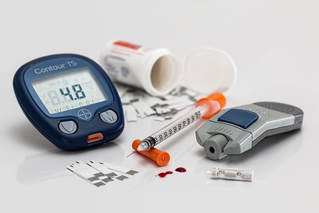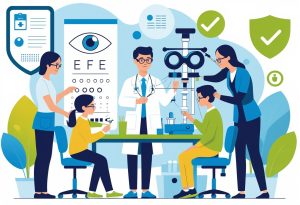Diabetes is a group of diseases that affects how the body uses sugar(glucose).Glucose is an important source of fuel for muscles and is the main fuel for the brain.
Diabetes is simply too much sugar in the blood, which can lead to serious health problems. Types of diabetes consist of type 1, type 2, and gestational. Type 1 usually appears in childhood or adolescence and presents with a quicker onset of symptoms and more severe presentation.
Symptoms of both types include increased thirst, increased urination, increased hunger, decrease in weight, fatigue, irritability, blurred vision, slow healing sores, and frequent infections on the skin and gums.
Type 2 is the more common type and can occur at any age, but usually appears after age 40.
Insulin is a hormone secreted by the pancreas. The insulin allows sugar to enter the cells of the body thereby decreasing the sugar in the bloodstream.
Sugar (glucose) comes from two sources- the liver and food.The liver stores glucose in the form of glycogen. When blood sugar is low the liver breaks down the glycogen into glucose, which enters the bloodstream and normalizes the level of sugar.
The cause of type 1 diabetes is unknown, but it is felt be an attack on the insulin producing cells of the pancreas by the body’s own immune system. This leaves the body with little to no insulin to let the cells utilize glucose for fuel.
In type 2 diabetes the cells in the body become resistant to insulin. The pancreas cannot make enough insulin to overcome the resistance. Therefore, as in type 1, glucose builds up in the blood instead of entering the cells to use for energy. Being overweight is strongly linked to type 2 diabetes. In addition to obesity, other risk factors for type 2 diabetes include, inactivity, family history, age, certains races (hispanics, native americans, and asian americans), polycystic ovary disease, high blood pressure, and elevated cholesterol and triglycerides.
Long term complications of diabetes develop slowly. The less controlled the blood sugar is, the more chance for complications. These complications include cardiovascular disease ( heart disease and stroke), nerve damage ( neuropathy), digestive issues, kidney disease, and for men, erectile dysfunction. Foot damage from untreated sores and blisters can lead to poorly healing infections, which can ultimately lead to amputation.
One other type of diabetes is known as gestational diabetes. This occurs during pregnancy. Most women who have gestational diabetes deliver healthy babies. However, uncontrolled diabetes can lead to very large babies and require a caesarean section. Other babies are born with low blood sugar because their own insulin production was stimulated across the placenta by the mother’s own high sugar. Rare severe complications include preeclampsia( high blood pressure, protein in urine ,and swelling of legs and feet). Once a mother has had gestational diabetes, her chance of having it with the next pregnancy increases.
Although a serious condition, diabetes can be detected early with routine screening. Sometimes a change in lifestyle, including exercise and significant weight reduction can bring blood sugar under control. If this is not enough, treatment plans can be formed to provide optimal control of blood sugar and avoidance of complications.






